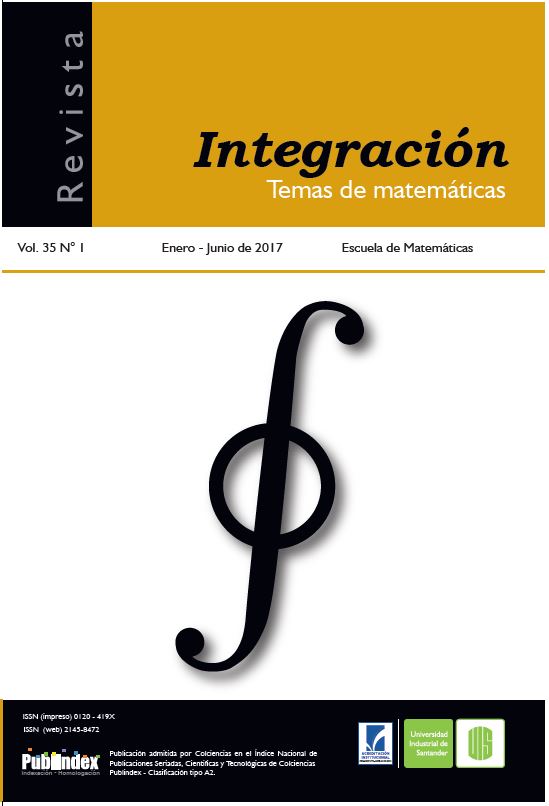Published 2017-08-09
Keywords
- Predator prey model,
- Zip bifurcation,
- r-strategist,
- K-strategist
How to Cite
Abstract
The purpose of this paper is to present a concrete model of competing population species that exhibits a phenomenon called zip bifurcation. The Zip Bifurcation was introduced by Farkas in 1984 for a three dimensional ODE prey-predator system describing a chemostat. We will study a three dimensional system of ordinary differential equations that model the competition of two predators species for one single prey species. The system is based on concrete trigonometric functions modeling the growth rate of the prey and the functional response of the predator. The model exhibits different kinds of behavior and shows examples of the so called “competitive exclusion principle,” and the competition of one “r-strategist” and one “K-strategist.” Additionally, in order to illustrate the zip bifurcation, we will present some numerical simulations for our model.
MSC2010: 92D25, 92D40, 34C23, 34D20, 34A34.
Downloads
References
[2] Bocsó A. and Farkas M.,“Political and economic rationality leads to velcro bifurcation”, Appl. Math. Comput. 140 (2003), No. 2–3, 381–389.
[3] Butler G.J. and Waltman P., “Bifurcation from a limit cycle in a two predator one prey ecosystem modeled in a chemostat”, J. Math. Biol. 12 (1981), No. 3, 295–310.
[4] Butler G.J., Hsu S.B. and Waltman P., “Coexistence of competing predators on a chemostat”, J. Math. Biol. 17 (1983), No. 2, 133–151.
[5] Butler G.J., “Competitive predator-prey systems and coexistence”, in: Population Biology Proceedings, Edmonton 1982, Lecture Notes in Biomath. 52, Springer-Verlag (1983), 210–217.
[6] Escobar-Callejas C.M., Gonzalez-Granada J.R. and Posso-Agudelo A.E., “Atractividad local en la bifurcación zip”, Ingeniería y Ciencia 6 (2010), No. 12, 11–41.
[7] Farkas M., “Zip Bifurcation in a competition model”, Nonlinear Anal. 8 (1984), No. 11, 1295–1309.
[8] Farkas M., “Competitive exclusion by zip bifurcation”, in: Dynamical systems, IIASAWorkshop, Sopron, Lecture Notes in Econom. and Math. Systems 287, Springer-Verlag (1987), 165–178.
[9] Farkas M., Periodic Motions, Springer, New York, 1994.
[10] Farkas M., Dynamical Models in Biology, Academic Press, San Diego, 2001.
[11] FarkasM., Sáez E. and Szántó I., “Velcro bifurcation in competition models with generalized
Holling functional response”, Miskolc Math. Notes 6 (2005), No. 2, 185–195.
[12] Farkas M. and Ferreira J.D., “Zip bifurcation in a reaction-diffusion system”, Differ. Equ. Dyn. Syst. 15 (2007), No. 3-4, 169–183.
[13] Ferreira J.D., “Zip bifurcation in an ample class of competitive systems”, Miskolc Math. Notes 8 (2007), No. 2, 147–156.
[14] Ferreira J.D. and De Oliveira L.A.F., “Zip bifurcation in a competitive system with diffusion”, Differ. Equ. Dyn. Syst. 17 (2009), No. 1–2, 37–53.
[15] Ferreira J.D., and Sree Hari Rao V., “Unsustainable zip-bifurcation in a predator-prey model involving discrete delay”, Proc. Roy. Soc. Edinburgh Sect. A 143 (2013), No. 6, 1209–1236.
[16] Hardin G., “The competitive exclusion principle”, Science 131 (1960), No. 3409, 1292–1297.
[17] Kalmykov L. and Kalmykov V., “Verification and reformulation of the competitive exclusion principle”, Chaos Solitons Fractals 56 (2013), 124–131.
[18] May R.M. and McLean A.R., Theoretical ecology. Principles and applications, Oxford University Press, Oxford, 2007.
[19] Sáez E., Stange E. and Szántó I., “Simultaneous zip bifurcation and limit cycles in three dimensional competition models”, SIAM J. Appl. Dyn. Syst. 5 (2006), No. 1, 1–11.
[20] Smith H.L. and Waltman P., The theory of the chemostat. Dynamics of microbial competition, Cambridge Studies in Mathematical Biology 13, Cambridge University Press, Cambridge, 1995.
[21] Waltman P., Hsu S.H. and Hubbell S.P., “Theoretical and experimental investigations of microbial competition in continuous cultures. Modelling and differentiel equations in Biology”, in Lecture Notes in Pure and Applied Mathematics 58, Dekker (1980), 107–152.
